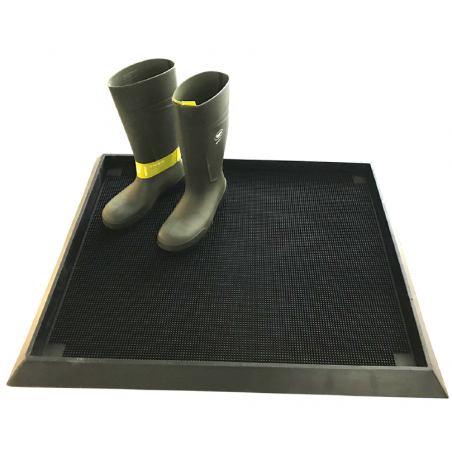There are currently no available vaccines to prevent ASFV, and outbreak control has often relied on quarantining and removing infected or exposed animals. Until now, effectively detecting live African Swine Fever Virus (ASFV) required collecting blood cells from a live donor pig for every diagnostic test. Here, we report a new way to detect the presence of live ASFV that minimizes the need for samples from live animals and provides easier access to veterinary labs that need to diagnose the virus. Rt-PCR or quantitative PCR (qPCR) is a well-established method for the detection and quantification of large amounts of ASFV clinical field samples. There are also some antibody detection assays that have a colorimetric readout, but the production of antibodies occurs days after ASFV can be found in clinical samples. In ASFV diagnostics, a positive ASFV rt-PCR would still require confirmation of virus isolation before it would be considered a positive sample. Before this report, the only available cell type to validate a positive rt-PCR test was primary swine macrophages.
Here, we identified that MA-104 cells could be used to test for the presence of infectious ASFV, with a sensitivity of about one log less than primary swine macrophages, but with a greater sensitivity of about one log than that of rt-PCR. MA-104 is a commercially available cell line isolated from Cercopithecus aethiops, kidney epithelial cells, commonly used for PRRS diagnosis and for simian rotavirus production. MA-104 cells have a doubling time of 72 h, do not have any special media requirements, and are easily frozen, qualities that are necessary during outbreak situations when a large number of clinical samples may need to be processed to determine if they contain infectious ASFV virus or just ASFV DNA. In addition, the ability of MA-104 cells to form clear hemadsorption (HA) will aid in the rapid diagnosis of ASFV. In the absence of a source of red blood cells, MA-104 cells can clearly be stained for the presence of ASFV using anti-ASFV antibodies, which is also useful to confirm the presence of ASFV in some natural isolates that may not form HA due to a mutation in CD2. This clear staining of ASFV-infected cells is an advantage over using swine macrophages as a substrate, as swine macrophages have peroxidase activity, which results in a high background in uninfected cells, increasing the possibility of missing a positive result or confirming a false positive one.

Preliminary studies showed that we were able to isolate ASFV from infected blood samples, indicating that MA-104 is an also a good substrate for direct isolation from field samples.
Rai A, Pruitt S, Ramirez-Medina E, Vuono EA, Silva E, Velazquez-Salinas L, Carrillo C, Borca MV, Gladue DP. Identification of a Continuously Stable and Commercially Available Cell Line for the Identification of Infectious African Swine Fever Virus in Clinical Samples. Viruses. 2020; 12(8): 820. https://doi.org/10.3390/v12080820





